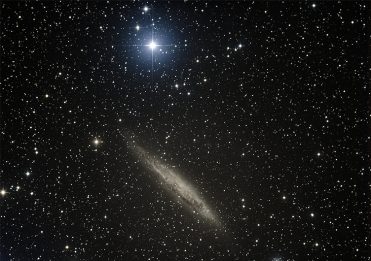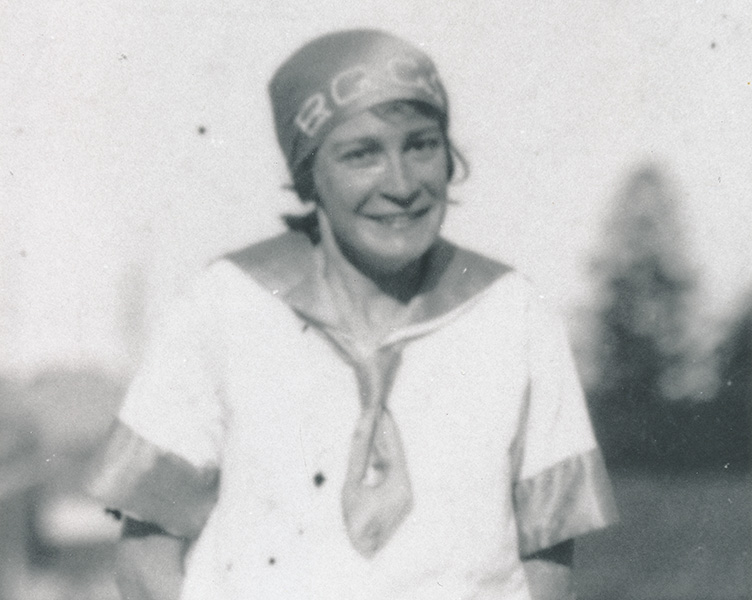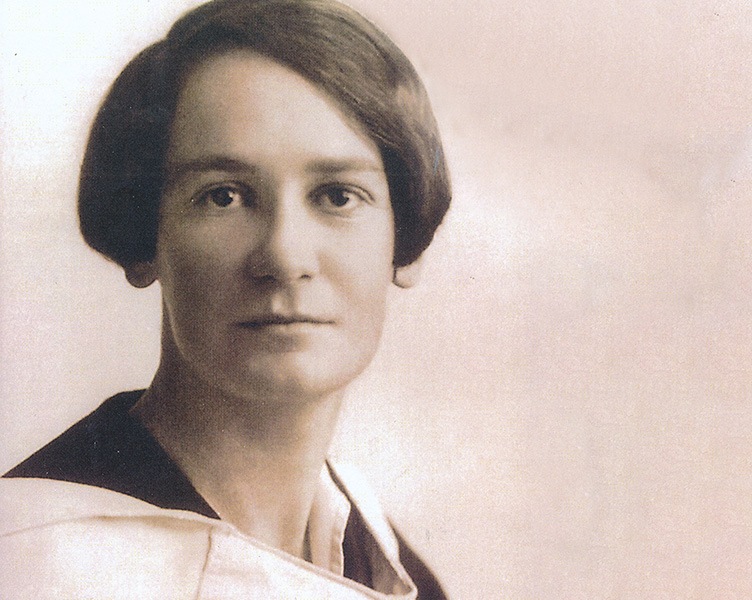
Astrophotography Competition Winners
Science | Friday 3 November 2023
Read More ▻
The Dorothy Hill Observatory is an extraordinary learning asset, comprising a remotely operated observatory and telescopes. The observatory is housed at Brisbane Girls Grammar School’s Marrapatta Memorial Outdoor Education Centre.
The observatory building features four telescopes, two robotic mounts and a variety of camera systems. Detailed equipment specifications can be found below.
The system is capable of unattended operation, which allows it to follow a wide variety of celestial objects and take images of these objects throughout the night that can later be downloaded by students.
Our observatory has been classified as a Designated Observatory by the Astronomical Society of Australia (ASA).
Astronomy has long been studied as part of the Brisbane Girls Grammar School Science curriculum, and is currently aligned with the Science Understanding strand of the Australian Curriculum.
The Dorothy Hill Observatory enhances the School’s commitment to astronomy, equipping Grammar girls with the knowledge and skills required to effectively undertake research using their own primary data—rather than relying on secondary data—and publish their research to support professional astronomical projects.
Students can use image-editing software and filters to enhance images and produce unique artistic results.
From a Science perspective, use of the observatory deepens in complexity each year, as students extend their skills. Examples of how students may use the observatory are listed below.
Year 7 students learn about the nature of our universe and the objects in it, with specific focus on deep sky objects such as nebulas, star clusters and galaxies. They are introduced to the functionality of the various telescopes in the Dorothy Hill Observatory and taught how the CCD telescope cameras work.
Girls choose a particular nebula, star cluster or galaxy to image using the 106 mm refracting telescope.
Year 8 students investigate how the combined functionality of the human eye and a telescope work together to produce magnified images of distant objects. They learn about the electromagnetic spectrum and the ways in which primary colours of light can be combined to make any other colour.
Girls choose a particular nebula, star cluster or galaxy to image using the 356 mm reflecting telescope, using red, green, and blue filters. They then stack and combine the images from each filter into one superior full-colour image.
Year 8 students also learn about asteroids and dwarf planets and use images from the 106 mm refracting telescope to produce a time lapse series of one of these objects moving through the sky.
Year 9 students learn about electron transition between atomic energy levels and connect this idea to the emission of light from nebulas of ionised gas. They link these concepts to atomic spectra and use this information to understand the purpose of narrowband imaging.
Girls choose a particular nebula to image using the 356 mm reflecting telescope, using Hα, OIII and SII narrowband filters. They then stack and combine the images from each filter into one superior full-colour Hubble palette image, which can be analysed to elucidate the presence and location of hydrogen, oxygen, and sulphur within the nebula.
Year 10 students learn about Type 1a supernovas and their use as a standard astronomical candle. They build on this idea to investigate galactic redshift and the expansion of the universe.
Girls analyse images of a Type 1a supernova, extracting photometric data and using this to create a light curve. Various Type 1a light curves are used to find distances to the supernovae, which are used in a Hubble plot to calculate the age of the universe.
All students in Years 7-10 with an interest in astronomy are invited to join the BGGS Astronomy Club, which meets fortnightly to learn about various space and astronomy topics.
Students in this club will have the opportunity to:
Questions about the Astronomy Club can be directed to Ms Katy Smith (ksmith@bggs.qld.edu.au).
Open to any students in Year 11 or Year 12, this group meets fortnightly to engage in astronomy research using the telescopes at the Dorothy Hill Observatory at Marrapatta.
Students in this research group will have the opportunity to:
Questions about the Student-Teacher Astronomy Research Symposium can be directed to Ms Gerri Bernard (gbernard@bggs.qld.edu.au).
Telescopes and Imaging:
8” (203 mm) Celestron Schmidt-Cassegrain
11” (280 mm) Celestron Schmidt-Cassegrain
100mm Sky-Watcher Esprit Refractor
4” (106 mm) Takahashi Refractor
14” (356 mm) Planewave Reflector
Additional Equipment
BGGS welcomes requests for research collaboration with other astronomy organisations. Please direct your requests to Ms Gerri Bernard (gbernard@bggs.qld.edu.au)
The following publications have made use of data from the Dorothy Hill Observatory:
Bernard, G., Hughes, K., and Lumsden, A. (2024). Astrometric Measurements of WDS 18445+3400 & WDS 14491+2628. The Journal of Double Star Observations, 20(1), 9-16.
Danalis, M., Murcott-Green,F., Packard,.K (2022). Measuring the Position Angle and Separation of WDS 11194-0139, The Journal of Double Star Observations, 18(4), 440-445
Bernard, G. (2021). AW Mic: The RR Lyrae That Wasn’t. Astronomy Theory, Observations & Methods, 2(1).
Holoien, T. W., Brown, J. S., Vallely, P. J., Stanek, K. Z., Kochanek, C. S., Shappee, B. J., … & Wiethoff, W. S. (2019). The ASAS-SN bright supernova catalogue–IV. 2017. Monthly Notices of the Royal Astronomical Society, 484(2), 1899-1911.
Nicholls, B., Brimacombe, J., Kiyota, S., Stone, G., Cruz, I., Trappett, D., … & Holmbo, S. (2018). Discovery of Ten ASAS-SN Supernovae. The Astronomer’s Telegram, 11391, 1.
Stone, G., Brimacombe, J., Cacella, P., Farfan, R. G., Vallely, P., Stanek, K. Z., … & Trappett, D. (2018). Discovery of Eight ASAS-SN Supernovae. The Astronomer’s Telegram, 11343, 1.
Brimbacombe, J., Nicholls, B., Trappett, D., Vallely, P., Stanek, K. Z., Kochanek, C. S., … & Kiyota, S. (2018). Discovery of 7 ASAS-SN Spuernovae.. The Astronomer’s Telegram, 11459, 1.
Brimacombe, J., Kiyota, S., Koff, R. A., Nicholls, B., Stone, G., Brown, J. S., … & Trappett, D. (2017). Discovery of Five ASAS-SN Supernovae. The Astronomer’s Telegram, 10960, 1.
Brimacombe, J., Post, R. S., Trappett, D., Marples, P., Koff, R. A., Stone, G., … & Kiyota, S. (2017). Discovery of Seven ASAS-SN Supernova Candidates. The Astronomer’s Telegram, 11074, 1.
Brimacombe, J., Trappett, D., Vallely, P., Stanek, K. Z., Brown, J. S., Kochanek, C. S., … & Stone, G. (2017). ASASSN-17ny, ASASSN-17oc, ASASSN-17oe: Discovery of Three ASAS-SN Supernovae. The Astronomer’s Telegram, 10930, 1.
The Dorothy Hill Observatory honours the significant contributions of past student, Professor Dorothy Hill (BGGS, 1924) to science in Australia and advances her ambition to deepen the impact of women as scientists, innovators and leaders.
Professor Hill (1907 to 1997) was:

Professor Dorothy Hill as a Brisbane Girls Grammar School student

Professor Dorothy Hill (1907 to 1997)